Why should we transition toward Circular Economy?
The transition toward a circular economy is not just a trend; it’s a necessity for our planet and future generations. Imagine a world where waste is minimized, resources are reused, and the environment thrives alongside economic growth. Sounds appealing, right? Well, that’s the essence of the circular economy! Unlike the traditional linear economy, which follows a 'take-make-dispose' model, the circular economy emphasizes restoration and regeneration. It encourages us to rethink how we produce, consume, and manage resources.
In a circular economy, products are designed with their entire lifecycle in mind. This means that instead of being discarded, materials are reused, refurbished, or recycled. Think of it as a never-ending circle where everything has a purpose. By shifting our focus from short-term consumption to long-term sustainability, we can create a system that not only benefits the economy but also protects our planet. It’s like turning a one-way street into a roundabout—where everything flows smoothly and efficiently.
The benefits of moving toward a circular economy are multifaceted. It can help us tackle pressing issues like resource scarcity, climate change, and pollution. By reducing waste and promoting sustainable practices, we can mitigate the harmful effects of industrialization and consumerism. Moreover, a circular economy can stimulate innovation, as businesses are encouraged to develop new ways to design products and services that align with sustainable principles. This not only fosters creativity but also opens up new markets and job opportunities.
Furthermore, the transition to a circular economy can enhance social equity. By embracing sustainable practices, communities can benefit from cleaner environments, improved public health, and increased job opportunities in green industries. Just think about it: when we invest in sustainable practices, we’re not just investing in the economy; we’re investing in the well-being of our communities and future generations.
In essence, transitioning to a circular economy is about more than just changing how we do business; it’s about reshaping our relationship with the planet. It’s a call to action for individuals, businesses, and governments alike. So, why should we transition? Because it’s not just good for the planet; it’s good for us all. Let’s embrace this change and work together toward a sustainable future!
- What is a circular economy? A circular economy is an economic system aimed at eliminating waste and the continual use of resources. It contrasts with a linear economy, which follows a 'take-make-dispose' model.
- How does a circular economy benefit the environment? By reducing waste, promoting recycling, and encouraging sustainable practices, a circular economy helps mitigate climate change and preserve natural resources.
- What are the economic advantages of transitioning to a circular economy? It can lead to resource efficiency, cost savings, and innovation in product design, creating new business opportunities and driving economic growth.
- What challenges might we face in this transition? Common challenges include the need for better infrastructure, policy support, and overcoming cultural resistance to change.
- How can technology facilitate the transition? Advancements in technology, such as the Internet of Things (IoT) and Artificial Intelligence (AI), can improve efficiency and support circular economy practices.
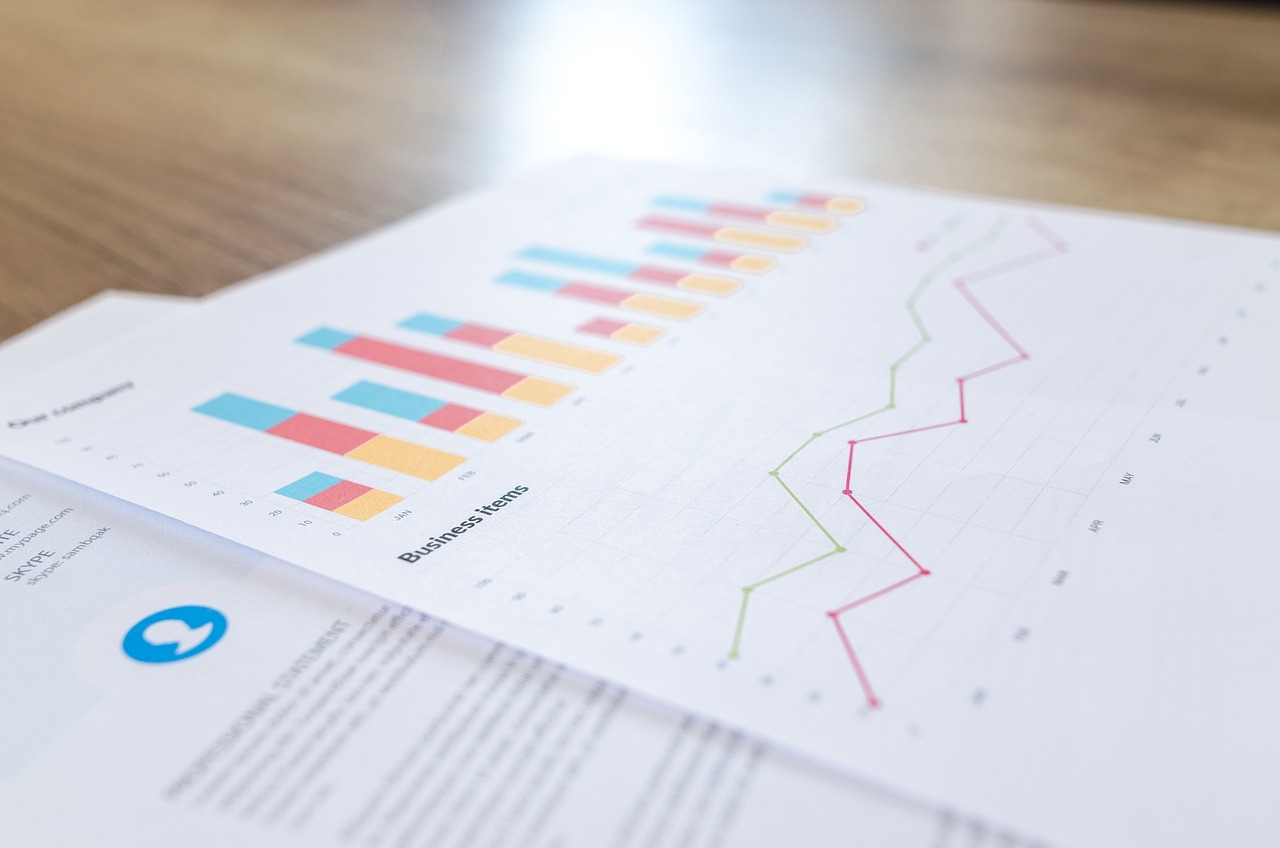
The Concept of Circular Economy
Understanding the principles of a circular economy is essential for anyone interested in sustainable development and environmental conservation. At its core, a circular economy is a transformative approach that reimagines how we produce, consume, and manage resources. Unlike the traditional linear economy, which follows a 'take-make-dispose' model, the circular economy emphasizes resource efficiency and sustainability. In this model, products are designed with their entire lifecycle in mind, aiming to minimize waste and maximize the use of resources.
In a linear economy, we extract raw materials, create products, and eventually discard them, leading to a significant amount of waste and environmental degradation. This model is akin to a one-way street: materials flow in one direction, and once they reach the end of their useful life, they are often left to pollute our planet. However, the circular economy turns this concept on its head. It promotes a closed-loop system where products are reused, refurbished, and recycled, thus extending their lifecycle and reducing the need for new resources.
To illustrate this, consider the lifecycle of a smartphone. In a linear model, a smartphone is purchased, used for a few years, and then discarded. In contrast, a circular economy approach would involve:
- Designing smartphones for longevity and repairability.
- Encouraging users to return old devices for refurbishment or recycling.
- Utilizing recycled materials in the production of new smartphones.
This shift not only conserves resources but also reduces the environmental impact associated with manufacturing new devices. By closing the loop, we can significantly lessen the strain on our planet's ecosystems.
Moreover, the circular economy is not just about waste reduction; it also fosters innovation and creativity. Companies are challenged to rethink their business models, leading to the development of new products and services that promote sustainability. For example, businesses might adopt product-as-a-service models, where customers pay for the use of a product rather than owning it outright. This encourages manufacturers to create durable products since they want to keep them in circulation for as long as possible.
In summary, the concept of a circular economy represents a fundamental shift in how we think about resources and sustainability. It encourages us to view waste not as an endpoint but as an opportunity for regeneration. By embracing this model, we can contribute to a more sustainable future where resources are valued, and environmental impacts are minimized.

Environmental Benefits
Transitioning to a circular economy is not just a trendy buzzword; it's a vital shift that can profoundly impact our planet's health. Imagine a world where waste is minimized, resources are reused, and the environment is preserved for future generations. This vision is not only achievable but essential. In a traditional linear economy, we take resources, make products, and then dispose of them. This model leads to excess waste and depletion of natural resources. In contrast, a circular economy emphasizes the continual use of resources, creating a closed-loop system that reduces waste and promotes sustainability.
One of the most significant environmental benefits of a circular economy is its potential to dramatically reduce waste. By shifting our focus from disposal to reuse, we can significantly decrease the amount of materials that end up in landfills. For instance, in a circular system, products are designed with their entire lifecycle in mind, encouraging repair, refurbishment, and recycling. This not only conserves resources but also reduces the energy and emissions associated with manufacturing new products from raw materials.
Furthermore, a circular economy can help mitigate climate change. The production and disposal of goods contribute significantly to greenhouse gas emissions. By minimizing waste and promoting recycling, we can lower these emissions. A study by the Ellen MacArthur Foundation suggests that transitioning to a circular economy could reduce global greenhouse gas emissions by up to 70% by 2030. This is a staggering figure that highlights the immense potential of this economic model.
Additionally, the circular economy promotes the preservation of natural resources. As we extract and consume resources at an alarming rate, we risk depleting the very materials that sustain us. By adopting practices such as recycling and upcycling, we can extend the life of these resources and reduce our reliance on virgin materials. For example, recycling aluminum saves around 90% of the energy required to produce new aluminum from bauxite ore. This not only conserves energy but also reduces the environmental impact associated with mining and processing raw materials.
| Resource | Energy Savings from Recycling |
|---|---|
| Aluminum | 90% |
| Glass | 30% |
| Paper | 60% |
| Plastic | 70% |
Moreover, the circular economy encourages biodiversity. By reducing the demand for raw materials, we lessen the pressure on ecosystems and habitats that are often destroyed for resource extraction. This shift not only protects wildlife but also helps maintain the delicate balance of our planet's ecosystems. Think of it as a chain reaction; when we protect one aspect of the environment, we inadvertently safeguard others, creating a healthier planet overall.
In conclusion, the environmental benefits of transitioning to a circular economy are vast and far-reaching. From reducing waste and emissions to conserving natural resources and promoting biodiversity, the advantages are clear. As we face the pressing challenges of climate change and resource depletion, embracing a circular economy is not just beneficial—it's imperative for the sustainability of our planet.
- What is a circular economy? A circular economy is an economic model that focuses on the continual use of resources, minimizing waste, and promoting sustainability.
- How does a circular economy help the environment? It reduces waste, lowers greenhouse gas emissions, conserves natural resources, and promotes biodiversity.
- What are some examples of circular economy practices? Examples include recycling, upcycling, product refurbishment, and designing products for longevity.
- Can businesses benefit from a circular economy? Yes, businesses can save costs, create new revenue streams, and innovate product designs by adopting circular economy practices.
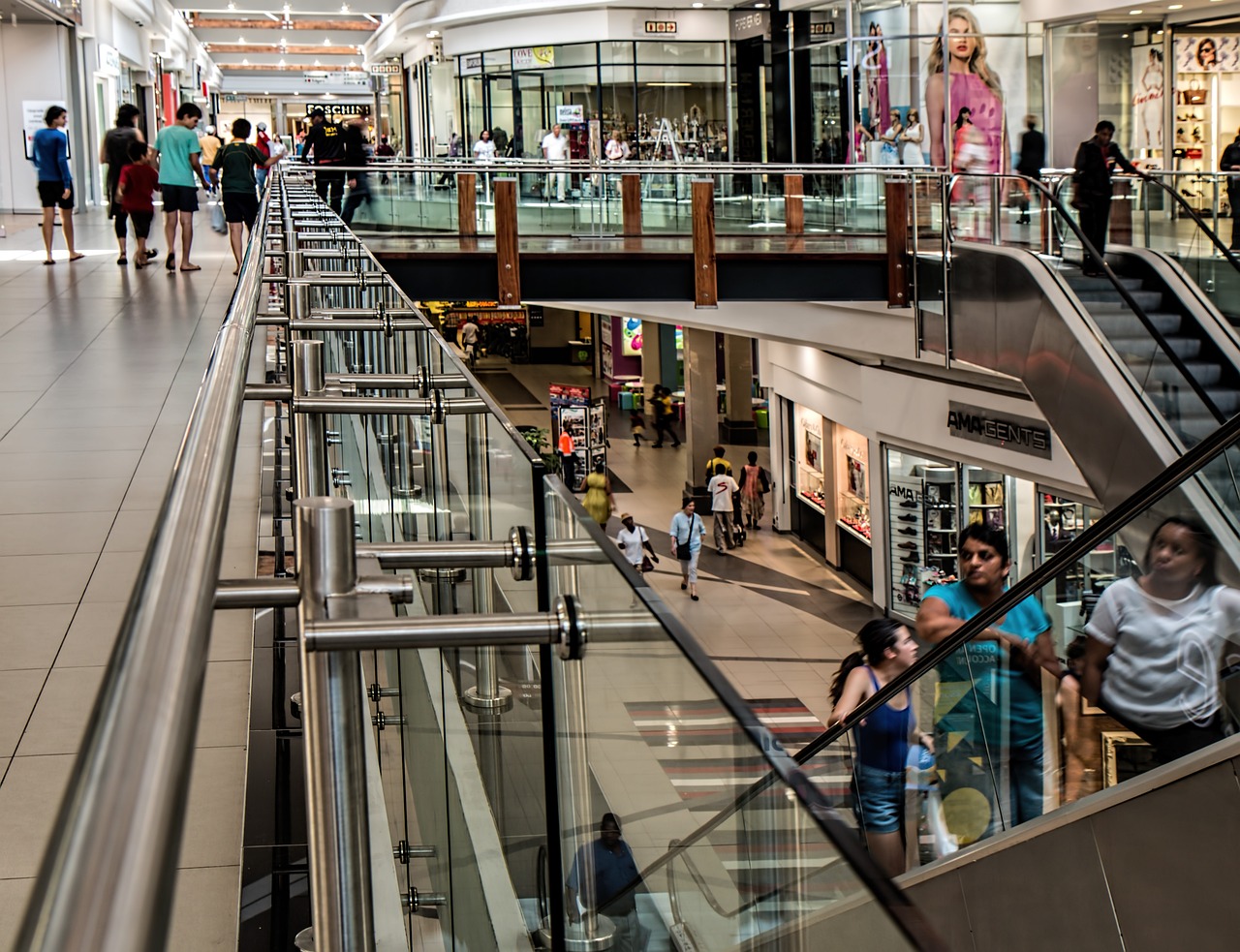
Economic Advantages
The transition to a circular economy isn't just about saving the planet; it's also a fantastic opportunity for economic growth. Imagine a world where businesses not only thrive but do so while being environmentally conscious. This is the promise of a circular economy, where the traditional notion of "take, make, dispose" is flipped on its head. Instead of wasting resources, we focus on keeping them in use for as long as possible, which can lead to significant financial benefits.
One of the most compelling aspects of a circular economy is its potential to create new business opportunities. Companies that embrace circular practices can tap into new markets and innovate in ways that traditional linear models simply cannot. For example, businesses can develop products designed for longevity, repairability, and recyclability, which not only appeal to environmentally conscious consumers but also reduce material costs in the long run. This shift requires a rethinking of product design and supply chain management, but the rewards can be substantial.
Let's break down some of the specific that come with transitioning to a circular economy:
- Resource Efficiency: By maximizing the use of existing materials and minimizing waste, companies can significantly cut costs associated with raw materials.
- Cost Savings: Implementing circular practices often leads to lower operational costs. For instance, by reusing materials and reducing waste disposal fees, businesses can save money.
- Innovation: The need for sustainable solutions drives innovation. Companies that invest in research and development for circular practices often find themselves ahead of the competition.
Moreover, the circular economy promotes job creation. As companies shift towards sustainable practices, they often need to hire new talent, particularly in areas like recycling, product design, and sustainable logistics. This not only helps the economy grow but also contributes to community well-being. Imagine a local economy where jobs are created not just for profit but for a greater purpose—this is the essence of a circular economy.
To put it into perspective, consider the following table that outlines potential economic impacts of adopting circular practices:
| Impact Area | Potential Economic Benefit |
|---|---|
| Resource Recovery | Reduction in material costs by up to 30% |
| Waste Reduction | Lower waste disposal costs, saving companies thousands annually |
| Job Creation | Estimates suggest millions of new jobs can be created in the green economy |
Overall, the circular economy offers a transformative approach that aligns economic growth with sustainability. It’s not just about being eco-friendly; it’s about being economically savvy. As more businesses recognize the benefits of this model, we can expect a ripple effect that will enhance not only their bottom line but also the overall health of our planet.
Q1: What is a circular economy?
A circular economy is an economic system aimed at eliminating waste and the continual use of resources. It contrasts with a traditional linear economy, which follows a "take, make, dispose" pattern.
Q2: How does a circular economy create jobs?
By shifting towards sustainable practices, businesses often need to hire additional staff for areas like recycling, product design, and logistics, leading to job creation.
Q3: What are some examples of circular economy practices?
Examples include product repair programs, recycling initiatives, and the design of products that can be easily reused or refurbished.
Q4: What are the economic benefits of transitioning to a circular economy?
The economic benefits include cost savings from resource efficiency, new business opportunities, and job creation in sustainable sectors.
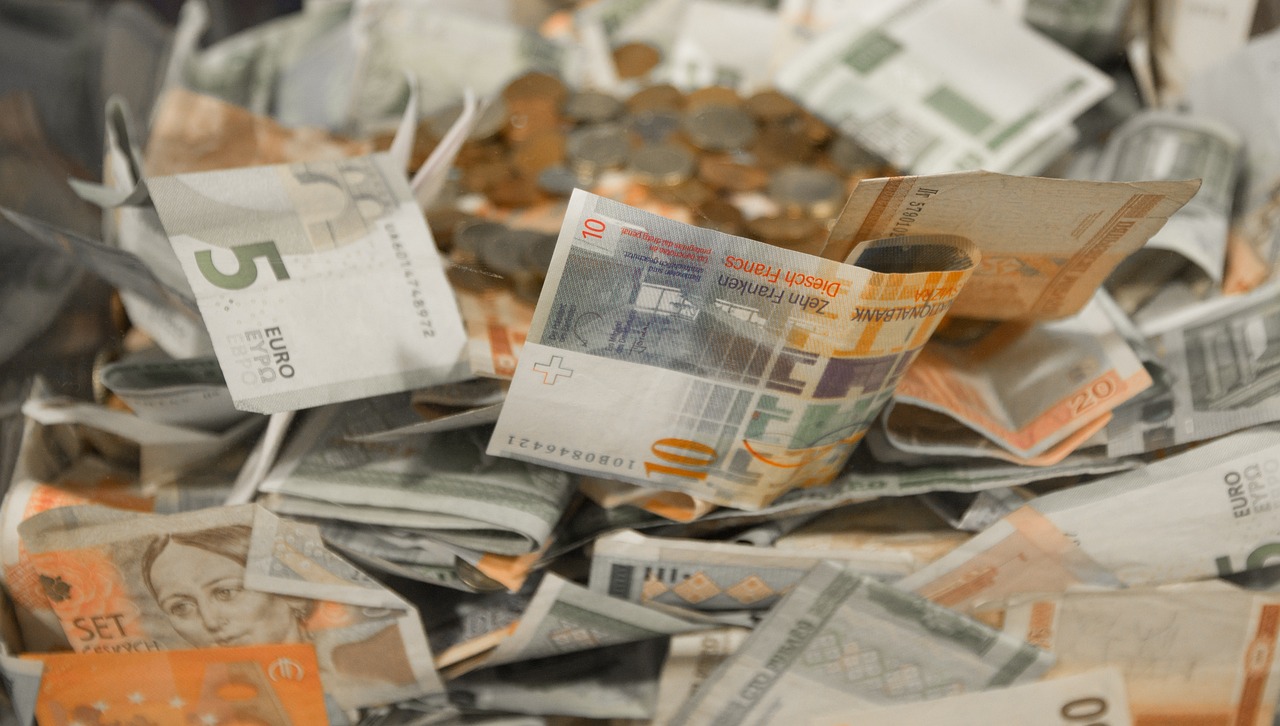
Social Implications
Transitioning to a circular economy isn't just about the environment or the economy; it profoundly affects our social fabric too. Imagine a world where waste is minimized, and resources are reused, creating a ripple effect that enhances community well-being. This shift can lead to a more equitable society, where everyone has access to the benefits of sustainable practices.
One of the most significant social implications of adopting a circular economy is the potential for job creation. As businesses pivot towards sustainable practices, new roles emerge that focus on recycling, refurbishing, and remanufacturing products. For instance, the demand for skilled workers in the recycling industry is on the rise, offering opportunities for individuals to gain employment in sectors that align with their values. This not only helps reduce unemployment rates but also fosters a sense of purpose among workers who contribute to environmental stewardship.
Moreover, a circular economy promotes local economies. When companies prioritize local resources and supply chains, they stimulate economic growth within their communities. This can be particularly beneficial for small businesses, which often struggle to compete with larger corporations. By supporting local enterprises that embrace circular practices, communities can create a more resilient economic landscape. Think of it this way: when you buy from a local shop that upcycles materials, you're not just making a purchase; you're investing in your community's future.
Another critical aspect is the enhancement of social equity. A circular economy encourages inclusivity by ensuring that all community members can participate in sustainability efforts. For example, initiatives that provide education on recycling and sustainable practices can empower individuals from all backgrounds to contribute to environmental goals. This sense of shared responsibility can foster stronger community bonds, as people come together to work towards a common cause.
However, the transition is not without its challenges. Cultural resistance can impede progress, as some individuals may be hesitant to change their consumption habits. To overcome this, awareness campaigns are essential. These campaigns can educate the public about the benefits of a circular economy, not just for the planet but for their communities as well. When people understand that their choices can lead to better job opportunities, cleaner neighborhoods, and a healthier planet, they are more likely to embrace the change.
In summary, the social implications of transitioning to a circular economy are vast and varied. From job creation and local economic growth to enhanced social equity and community cohesion, the benefits are clear. As we move towards this sustainable model, it is crucial to engage communities and foster a collective effort that empowers individuals to take part in this transformative journey.
- What is a circular economy? A circular economy is an economic system aimed at eliminating waste and the continual use of resources through recycling, reuse, and sustainable practices.
- How does a circular economy create jobs? By focusing on recycling, refurbishing, and remanufacturing, new job opportunities arise in various sectors that prioritize sustainability.
- Why is social equity important in a circular economy? Social equity ensures that all community members can benefit from sustainable practices, leading to a more inclusive and fair society.
- What are some challenges in transitioning to a circular economy? Challenges include cultural resistance, lack of infrastructure, and the need for supportive policies and regulations.

Challenges to Implementation
Transitioning to a circular economy is not just a matter of flipping a switch; it’s more like navigating a complex maze filled with obstacles. While the benefits are clear, the road to implementation is paved with challenges that both businesses and governments must tackle. One of the primary hurdles is the current infrastructure. Many regions lack the necessary facilities for recycling and waste management, making it difficult to close the loop on production and consumption. Imagine trying to ride a bike on a road full of potholes; it slows you down and makes the journey frustrating.
Another significant challenge is policy support. Governments need to create regulatory frameworks that not only encourage circular practices but also provide incentives for businesses to adopt them. Without clear guidelines and support, companies might hesitate to invest in sustainable practices due to the perceived risks. Think of it as trying to build a house without a blueprint; you might end up with a structure that’s not only unstable but also unsustainable.
Cultural resistance also plays a critical role in hindering the transition. Many people are accustomed to the traditional linear economy model, where products are made, used, and disposed of. Changing this mindset requires extensive education and awareness campaigns. For instance, if communities are not aware of the benefits of recycling or reusing materials, they are less likely to participate in circular initiatives. It’s akin to teaching an old dog new tricks; it takes time, patience, and a lot of repetition.
Moreover, the initial costs of transitioning can be daunting. Businesses may need to invest in new technologies or processes that can seem expensive upfront. While these investments often lead to long-term savings and efficiency, the initial financial burden can deter many from making the switch. Here, a robust support system from both government and financial institutions can make a world of difference, helping businesses to see the long-term value of their investments.
Lastly, collaboration is essential but often lacking. A circular economy thrives on partnerships between various stakeholders, including businesses, governments, and communities. However, fostering this collaboration can be challenging, as different entities may have conflicting interests or priorities. For a circular economy to flourish, a shared vision and commitment to sustainability are crucial. Think of it as a team sport; everyone needs to be on the same page to win.
In summary, while the transition to a circular economy holds immense potential for environmental, economic, and social benefits, it is fraught with challenges. Addressing these hurdles requires a concerted effort from all sectors of society, ensuring that we can pave the way for a more sustainable future.
- What is a circular economy? A circular economy is an economic system aimed at eliminating waste and the continual use of resources, promoting sustainability.
- What are the main challenges to implementing a circular economy? Key challenges include inadequate infrastructure, lack of policy support, cultural resistance, high initial costs, and the need for collaboration among stakeholders.
- How can businesses overcome these challenges? Businesses can invest in education, seek government incentives, and collaborate with other organizations to share resources and strategies.
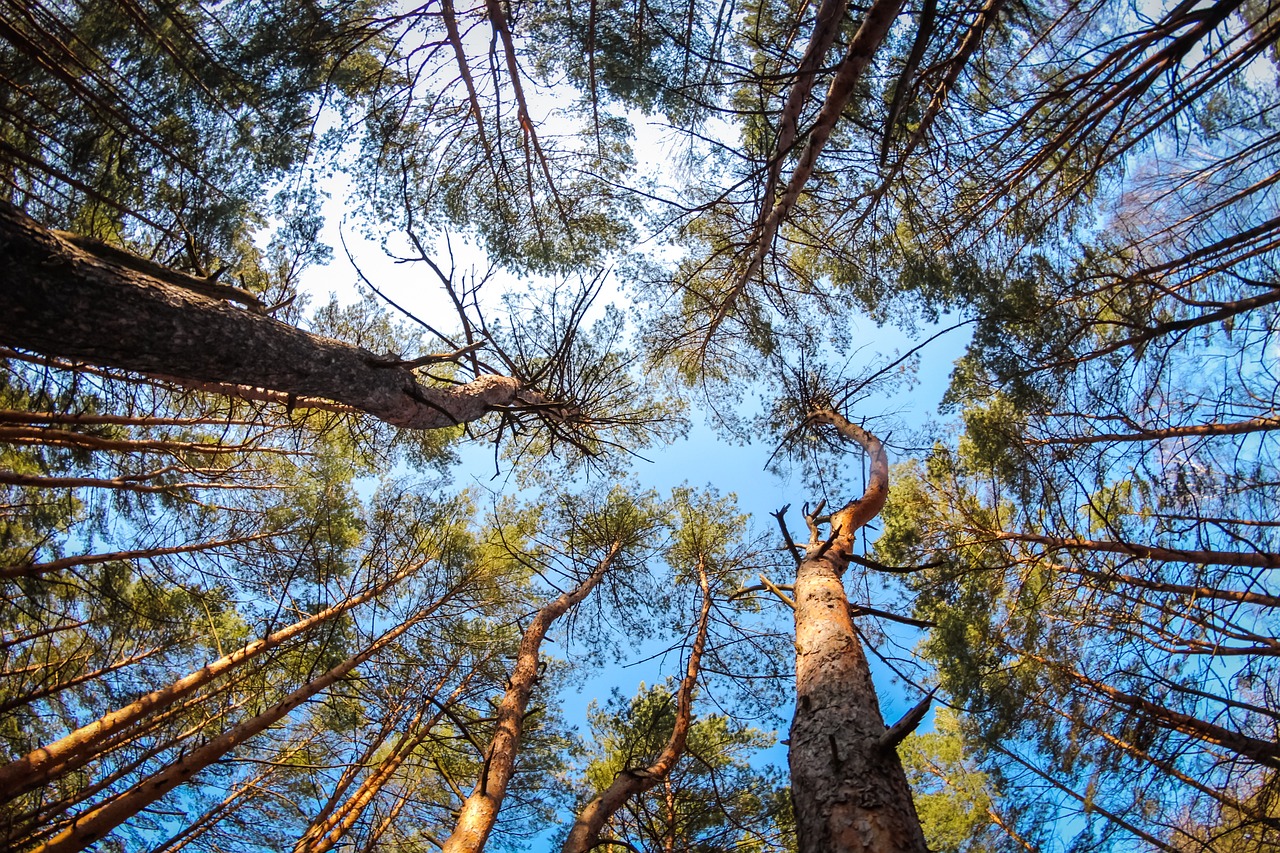
Case Studies of Success
When we talk about the circular economy, real-world examples can be the most convincing argument for its benefits. Let's dive into some inspiring case studies that illustrate how businesses across various sectors have successfully implemented circular principles, leading to both environmental and economic gains.
One standout example is Patagonia, the outdoor clothing brand. Known for its commitment to sustainability, Patagonia has embraced a circular economy by encouraging customers to repair their gear instead of throwing it away. Their Worn Wear program allows customers to trade in used clothing for store credit, which is then refurbished and resold. This initiative not only reduces waste but also fosters a culture of sustainability among consumers. By prioritizing durability and repairability, Patagonia has positioned itself as a leader in sustainable fashion, demonstrating that eco-friendly practices can coexist with profitability.
Another impressive case comes from Unilever, a multinational consumer goods company. Unilever has committed to making all of its plastic packaging recyclable, reusable, or compostable by 2025. They have launched initiatives like the ‘Less Plastic, Better Plastic’ strategy, which focuses on reducing plastic use and investing in alternative materials. For instance, their Love Beauty and Planet line uses bottles made from 100% recycled plastic, showcasing how a large corporation can pivot towards sustainability while meeting consumer demands. This not only enhances Unilever's brand image but also contributes to a significant reduction in plastic waste.
In the tech industry, Apple has made strides towards a circular economy through its Renew program. This initiative encourages customers to recycle their old devices by offering trade-in options, ensuring that valuable materials are recovered and reused. Apple’s commitment to using recycled materials in its products, such as aluminum and rare earth elements, exemplifies how technology companies can minimize their environmental footprint. The company aims to become 100% carbon neutral across its entire supply chain by 2030, proving that sustainability can drive innovation and customer loyalty.
Lastly, let’s look at the construction sector, where the Circle Economy initiative in the Netherlands has gained traction. By promoting the reuse of building materials, this initiative has transformed how construction projects are approached. For example, the renovation of the Kop van Oost area in Amsterdam incorporated salvaged materials from other projects, significantly reducing waste and costs. This model not only demonstrates the feasibility of circular principles in construction but also highlights the potential for significant environmental impact through resource efficiency.
These case studies serve as a testament to the fact that transitioning to a circular economy is not just a theoretical concept; it is a practical, achievable goal. As more businesses adopt these principles, we can expect to see a ripple effect that encourages others to follow suit. The success of Patagonia, Unilever, Apple, and Circle Economy illustrates that with creativity and commitment, a circular economy can indeed thrive.
- What is a circular economy? A circular economy is an economic system aimed at minimizing waste and making the most of resources. It contrasts with the traditional linear economy, which follows a 'take, make, dispose' model.
- How can businesses transition to a circular economy? Businesses can transition by adopting sustainable practices, redesigning products for longevity, and implementing recycling and reuse strategies.
- What are the benefits of a circular economy? Benefits include reduced environmental impact, cost savings, new business opportunities, and enhanced brand reputation.
- Can consumers contribute to a circular economy? Absolutely! Consumers can contribute by choosing sustainable products, participating in recycling programs, and supporting companies that prioritize circular practices.
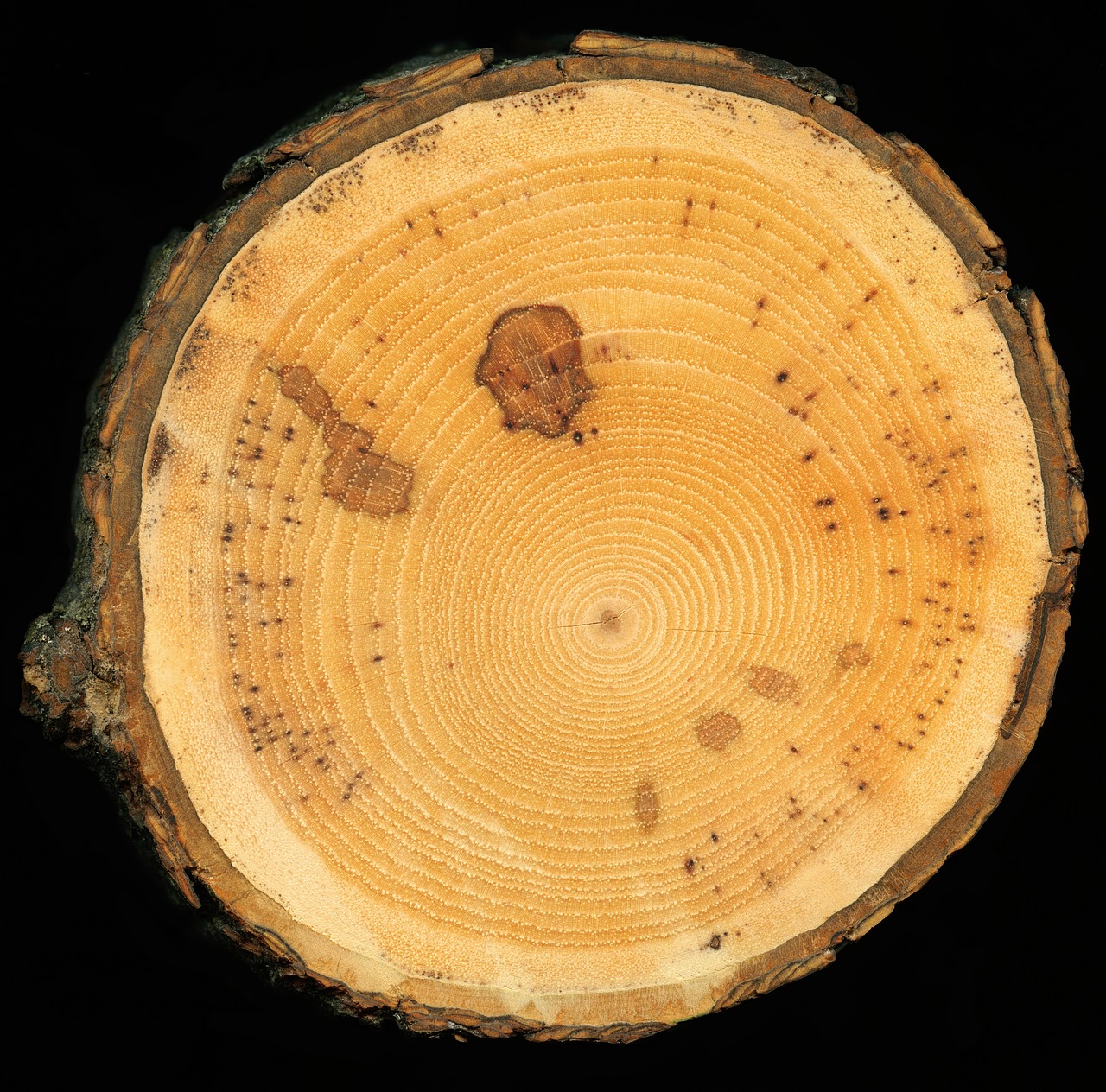
Role of Technology
When we think about the circular economy, technology isn't just a supporting player; it's the star of the show! Imagine a world where waste becomes a thing of the past, and resources are reused and recycled efficiently. This is not just a dream—it's becoming a reality thanks to the rapid advancements in technology. From the Internet of Things (IoT) to Artificial Intelligence (AI), technology is paving the way for more sustainable practices that can revolutionize industries.
One of the most exciting aspects of technology in the circular economy is its ability to enhance resource efficiency. For instance, IoT devices can monitor and manage resources in real-time, allowing businesses to optimize their operations. Think of it like having a smart assistant that helps you keep track of your belongings, ensuring nothing goes to waste. By using sensors and data analytics, companies can predict when equipment will fail, reducing downtime and preventing unnecessary waste.
Moreover, AI plays a pivotal role in product design. With machine learning algorithms, businesses can analyze consumer behavior and preferences, leading to the creation of products that are not only desired but also designed for longevity and recyclability. This shift in mindset is crucial; it’s about creating products that are built to last and can easily be disassembled and repurposed at the end of their life cycle.
Another area where technology shines is in the realm of recycling and waste management. Advanced sorting technologies, powered by AI, can identify and separate materials more accurately than ever before. This means that more materials can be diverted from landfills and reintroduced into the production cycle. For example, automated sorting facilities can process thousands of tons of waste daily, extracting valuable materials like metals and plastics that can be reused, thereby reducing the need for virgin resources.
Additionally, technology facilitates collaboration across industries. Platforms that connect businesses, consumers, and recyclers can streamline the process of sharing resources and information. This interconnectedness is essential for a circular economy, where the goal is to create a closed-loop system that minimizes waste. By leveraging technology, companies can form partnerships that enhance their sustainability efforts and drive innovation.
However, it’s essential to recognize that while technology offers immense potential, it also comes with challenges. Issues such as data privacy, the digital divide, and the need for significant investment in infrastructure can hinder progress. Therefore, it’s crucial for businesses and governments to work together to create a conducive environment for technological advancements that align with circular economy principles.
In conclusion, the role of technology in the circular economy is transformative. It empowers businesses to operate more efficiently, fosters innovation in product design, enhances recycling processes, and encourages collaboration. As we continue to embrace these technological advancements, we move closer to a sustainable future where resources are cherished, and waste is minimized.
- What is the circular economy? The circular economy is an economic model that focuses on sustainability by reducing waste and promoting the continual use of resources.
- How does technology contribute to the circular economy? Technology enhances resource efficiency, improves product design, and streamlines recycling processes, making it easier to reduce waste.
- What are some examples of technology used in the circular economy? Examples include IoT devices for monitoring resources, AI for product design, and advanced sorting technologies for recycling.
- What challenges does technology face in the circular economy? Challenges include data privacy concerns, the digital divide, and the need for significant infrastructure investments.

Policy and Regulation
The transition to a circular economy is not just a matter of individual choice or corporate responsibility; it heavily relies on effective policy and regulation. Governments play a crucial role in shaping the landscape for circular practices through legislation, incentives, and frameworks that promote sustainability. Without robust policies in place, the shift from a traditional linear economy—where products are made, used, and disposed of—to a circular model, which emphasizes reuse, recycling, and resource efficiency, can be incredibly challenging.
One of the primary ways governments can facilitate this transition is by implementing regulatory frameworks that encourage businesses to adopt sustainable practices. For example, regulations can mandate recycling targets for companies, incentivizing them to design products that are easier to disassemble and recycle. Additionally, governments can offer tax breaks or subsidies for businesses that invest in sustainable technologies or practices, thereby reducing their environmental footprint.
Moreover, public policy can also include educational initiatives aimed at raising awareness about the benefits of a circular economy. When consumers understand the value of sustainability, they are more likely to support businesses that prioritize eco-friendly practices. This creates a virtuous cycle where consumer demand drives corporate responsibility, which in turn influences policy decisions.
However, it’s essential to recognize that not all policies are created equal. Some may inadvertently create barriers to circular practices. For instance, regulations that favor single-use products or impose high costs on recycling can stifle innovation and discourage businesses from pursuing circular models. Therefore, it’s crucial for policymakers to engage with stakeholders—businesses, non-profits, and the public—to craft regulations that are not only effective but also practical.
To illustrate the impact of policy on circular economy practices, consider the following table that outlines key regulatory approaches and their effects:
| Policy Approach | Description | Potential Impact |
|---|---|---|
| Extended Producer Responsibility (EPR) | Holds manufacturers accountable for the entire lifecycle of their products. | Encourages sustainable design and reduces waste. |
| Subsidies for Recycling | Financial incentives for businesses that implement recycling programs. | Increases recycling rates and reduces landfill use. |
| Waste Reduction Targets | Mandates for businesses to reduce waste generation. | Promotes innovation in waste management and product design. |
Ultimately, the success of transitioning to a circular economy hinges on the collaboration between governments, businesses, and communities. Policies must be designed to foster an environment conducive to sustainable practices, while also being flexible enough to adapt to the evolving needs of society and the economy. As we move forward, it’s imperative that we keep the lines of communication open among all stakeholders to ensure that we are collectively working toward a sustainable future.
- What is a circular economy? A circular economy is an economic model that focuses on sustainability by reusing, recycling, and minimizing waste, in contrast to the traditional linear economy.
- How do policies influence the circular economy? Policies can create incentives for sustainable practices, set recycling targets, and promote public awareness about the importance of a circular economy.
- What challenges do governments face in implementing circular economy policies? Common challenges include resistance from industries, lack of infrastructure, and the need for public education on sustainability.

Future Outlook
As we gaze into the horizon of the circular economy, it’s hard not to feel a sense of optimism. The transition towards a circular economy is not just a fleeting trend; it's becoming a fundamental shift in how we think about production and consumption. Imagine a world where waste is merely a resource waiting to be repurposed, where products are designed with their next life in mind. This vision is becoming more tangible as businesses, governments, and communities increasingly recognize the need for sustainable practices.
Emerging trends suggest that the circular economy will be driven by several key factors:
- Consumer Awareness: Today's consumers are more environmentally conscious than ever. They demand transparency and sustainability from brands, pushing companies to adopt circular practices.
- Technological Innovation: Advancements in technology, such as the Internet of Things (IoT) and artificial intelligence (AI), are enabling better resource management and more efficient recycling processes. These technologies help businesses track materials and optimize their supply chains.
- Policy Support: Governments worldwide are beginning to establish regulations and incentives that promote circular practices. This includes tax breaks for sustainable businesses and stricter regulations on waste management.
Furthermore, the integration of circular economy principles into educational curricula is paving the way for a new generation of innovators and thinkers. As students learn about sustainability and resource efficiency, they are more likely to develop solutions that align with circular economy practices. This cultural shift is essential for embedding these values into the fabric of society.
Looking ahead, we can expect to see a rise in collaborative initiatives between businesses, governments, and NGOs. These partnerships will be crucial in developing infrastructure that supports circular practices, such as recycling facilities and repair workshops. The more we collaborate, the more successful we will be in overcoming the challenges that lie ahead.
In conclusion, the future of the circular economy is not just promising; it’s essential for our survival. By embracing this model, we can create a sustainable world that thrives on efficiency, innovation, and community well-being. The road may be long, and the journey may be fraught with challenges, but the rewards—both for the planet and for future generations—are worth the effort.
- What is a circular economy? A circular economy is an economic system aimed at minimizing waste and making the most of resources. It contrasts with the traditional linear economy, which follows a 'take, make, dispose' model.
- How does a circular economy benefit the environment? By reducing waste and promoting recycling, a circular economy helps to mitigate climate change, conserve natural resources, and decrease pollution.
- What role does technology play in the circular economy? Technology, such as IoT and AI, enhances resource management, improves efficiency in recycling processes, and supports the design of products that are easier to reuse and recycle.
- What challenges does a circular economy face? Common challenges include the need for new infrastructure, policy support, and overcoming cultural resistance to change.
Frequently Asked Questions
- What is a circular economy?
A circular economy is an alternative economic model that focuses on sustainability by minimizing waste and making the most of resources. Unlike the traditional linear economy, which follows a 'take, make, dispose' pattern, a circular economy promotes reusing, recycling, and regenerating materials to create a closed-loop system. This approach not only reduces environmental impact but also fosters innovation and efficiency.
- What are the environmental benefits of transitioning to a circular economy?
Transitioning to a circular economy significantly helps in reducing waste and pollution. By promoting recycling and reusing materials, we can lower greenhouse gas emissions and conserve natural resources. This shift is crucial in combating climate change and preserving ecosystems for future generations. It’s like turning off the tap while you wash your hands, conserving water for everyone!
- How can businesses benefit economically from a circular economy?
Businesses can reap numerous economic benefits by adopting circular economy principles. These include cost savings through resource efficiency, reduced waste disposal costs, and new revenue streams from recycled materials. Moreover, companies that innovate in product design can attract eco-conscious consumers, enhancing their market position. It’s a win-win situation where sustainability meets profitability!
- What social implications come with the transition to a circular economy?
Transitioning to a circular economy can lead to enhanced social equity and improved community well-being. Sustainable practices can create jobs in recycling and repair sectors, providing new employment opportunities. Additionally, by fostering local production and consumption, communities can enjoy a better quality of life, much like the feeling of a close-knit neighborhood where everyone supports each other.
- What challenges do businesses face when implementing circular economy practices?
Despite its advantages, businesses encounter several challenges when shifting to a circular economy. These include a lack of infrastructure for recycling, insufficient policy support, and resistance to change from traditional practices. Overcoming these hurdles requires collaboration between businesses, governments, and communities to create a supportive ecosystem for circular initiatives.
- Can you provide examples of successful circular economy initiatives?
Absolutely! Many companies have successfully implemented circular economy practices. For instance, some fashion brands are using recycled materials to create new clothing lines, while tech companies are designing products that are easier to repair and recycle. These case studies demonstrate that innovative thinking can lead to sustainable practices that benefit both the environment and the economy.
- How does technology support the circular economy?
Technology plays a vital role in facilitating the transition to a circular economy. Innovations such as the Internet of Things (IoT) and artificial intelligence (AI) help monitor resource use, optimize recycling processes, and track materials throughout their lifecycle. By leveraging technology, businesses can improve efficiency and transparency, making circular practices more achievable and effective.
- What role do government policies play in promoting a circular economy?
Government policies are crucial for encouraging the adoption of circular economy practices. Regulatory frameworks and incentives can motivate businesses to invest in sustainable practices. Policies that support recycling, waste reduction, and resource efficiency create an environment where circular economy initiatives can flourish, much like a gardener nurturing a plant to help it grow strong and healthy.
- What does the future hold for the circular economy?
The future of the circular economy looks promising! As awareness of sustainability grows, more businesses and individuals are likely to embrace circular practices. Emerging trends such as increased consumer demand for sustainable products and advancements in recycling technology will drive this transition. The long-term impact of widespread adoption could lead to a more sustainable world for generations to come.



















